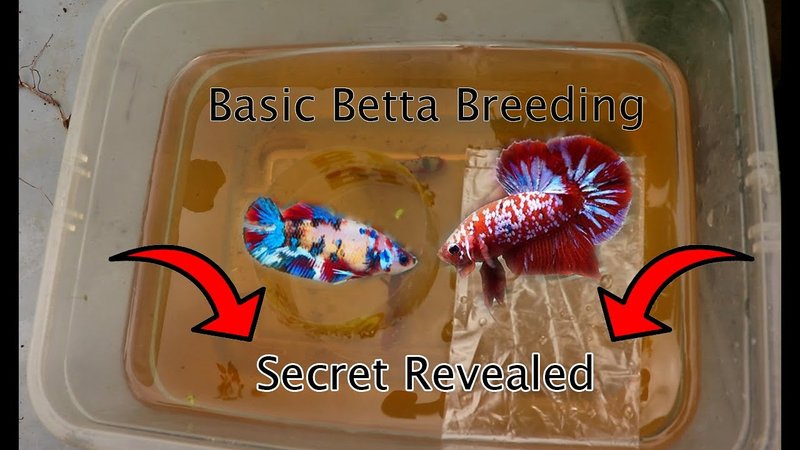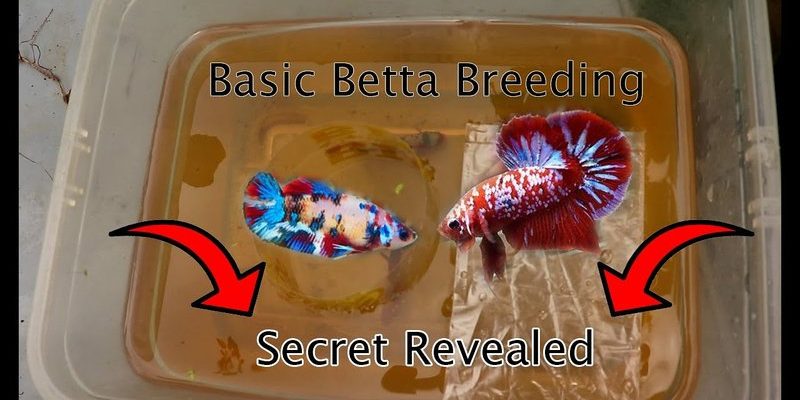
Here’s the thing: betta fish, known for their stunning colors and distinctive fins, have unique breeding behaviors and requirements. You’ll need to think like a fish parent, creating the perfect environment for them to thrive and reproduce. So, grab a cup of coffee, and let’s explore how to breed betta fish in your own home!
Understanding Betta Fish Behavior
Before you jump into breeding, it’s crucial to understand how betta fish behave, especially during mating. Betta males, with their vibrant colors and long fins, are a sight to behold. They’re also known for being territorial and aggressive, particularly towards other males. This means that when it comes to breeding, introducing the right male and female is key.
When a male betta is ready to breed, he begins to build a bubble nest. You can spot this under the tank’s water surface, where he creates bubbles using mucus and air. When a female approaches, she might show off her stripes, signaling her interest. However, you might be wondering: “What if they don’t get along?” That’s where a proper introduction comes into play, which we’ll discuss later.
Setting Up the Breeding Environment
Creating a suitable breeding environment is a fundamental step in the process. You’ll need a tank that holds at least 5 gallons of water. Here’s what to keep in mind:
- Water Quality: Betta fish thrive in clean, dechlorinated water with a pH level between 6.5 and 7.5. Test your water to make sure it meets these criteria.
- Temperature: Keep the water temperature between 76°F and 82°F (24°C to 28°C). A heater may be necessary to maintain this environment.
- Hiding Spots: Adding plants and decorations provides hiding spots and helps reduce stress during breeding. Use soft, live plants for the best results.
Honestly, imagine it like setting up a cozy bedroom for your furry friends, but underwater. The right setup helps minimize stress, helping your bettas feel at home and ready to breed.
Choosing the Right Betta Fish
Selecting the right bettas is crucial for a successful breeding experience. The ideal pair consists of a healthy male and female, both displaying vibrant colors and active behavior. You might want to consider the following:
- Age: Ensure the fish are at least 4-6 months old. Younger fish may not be ready to breed, while older fish might have challenges.
- Health: Look for signs of good health, like clear eyes, vibrant colors, and no visible signs of illness.
- Temperament: A compatible pair should be active and display the right breeding behaviors. If a male is overly aggressive, it might not be the right match.
Selecting your breeding pair is similar to matchmaking, where you want to create the perfect chemistry between them.
The Breeding Process: Step-by-Step
Now that you have your breeding pair and the perfect setup, let’s dive into the breeding process. Here’s how it typically unfolds:
1. Introduce the Female: Start by placing the female betta in a separate compartment or a breeding box within the male’s tank. This way, they can see and interact without direct contact.
2. Monitor Their Interaction: After a few days, if both fish appear interested, you can remove the divider. Keep a close eye on their behavior during this time.
3. Bubble Nest Formation: The male will begin to build a bubble nest, and once he’s ready, he’ll entice the female to join him beneath it. This is when the fun truly begins!
4. Spawning: During spawning, the female will release her eggs, which the male will catch and place in the bubble nest. After spawning, the male takes over, guarding the nest and ensuring the eggs are safe.
This entire process resembles a dance—a beautiful display of nature that’s quite mesmerizing to witness.
Caring for the Eggs and Fry
After the spawning process, the male will care for the eggs until they hatch, usually within 24 to 36 hours. Here’s how to take care of them:
– Remove the Female: Once the eggs are in the bubble nest, it’s best to remove the female to prevent any aggression from the male.
– Feeding the Fry: Once the baby bettas (called fry) are free-swimming, they’ll need to be fed tiny food, like crushed flakes or specialized fry food. You might even consider providing infusoria, which are tiny microorganisms that are perfect for new hatchlings.
– Maintain Water Quality: Keeping the water clean becomes even more critical during this time. Regular water changes can help prevent diseases from setting in.
Caring for the fry can feel like an exciting challenge, almost like hosting a toddler’s birthday party—lots of energy but completely worth it!
Common Challenges You Might Face
Like any rewarding journey, breeding bettas can come with its own set of challenges. You might encounter various issues, like:
– Aggressive Behavior: Sometimes, even the best-matched bettas can become aggressive. If the male is too aggressive towards the female, separate them immediately.
– Poor Egg Fertility: If fewer eggs hatch than expected, it might stem from poor water conditions or unhealthy parents.
– Fry Survival Rate: Not every fry will survive, especially during the early stages. Keeping them in a clean, monitored environment is essential for maximizing their chances.
It’s important to have a positive mindset. Every breeder faces challenges; overcoming them is part of the journey.
Breeding betta fish at home can be an exciting and fulfilling adventure. It teaches you about the delicate balance of nature and responsibility. By creating the right environment, choosing healthy fish, and understanding their behaviors, you can experience the awe of watching new life emerge right in front of you.
Whether you’re a seasoned fish enthusiast or a complete beginner, this journey can bring joy and a sense of achievement. So, are you ready to give it a try? Each step you take brings you closer to adding beautiful new bettas to your world!

